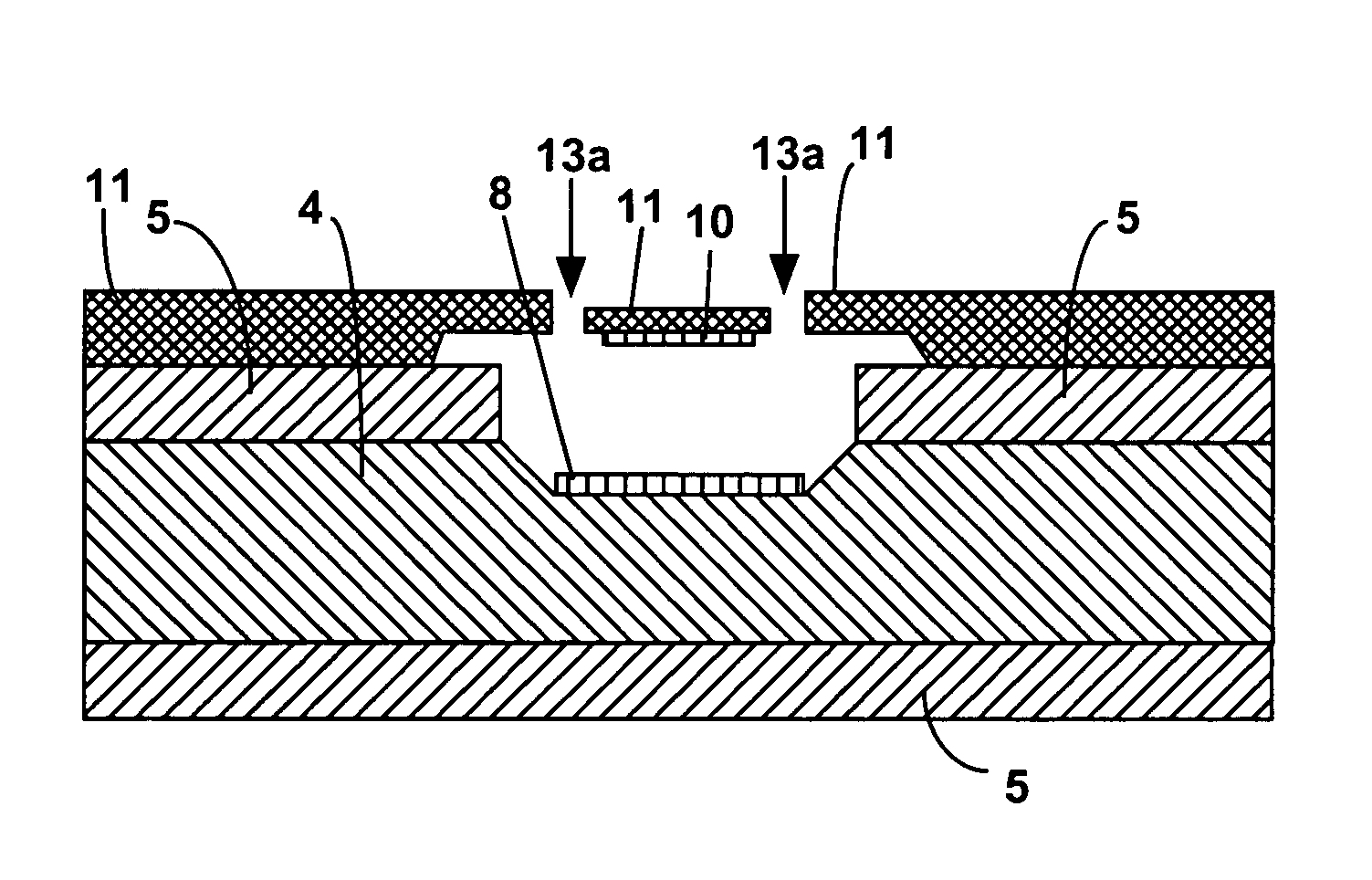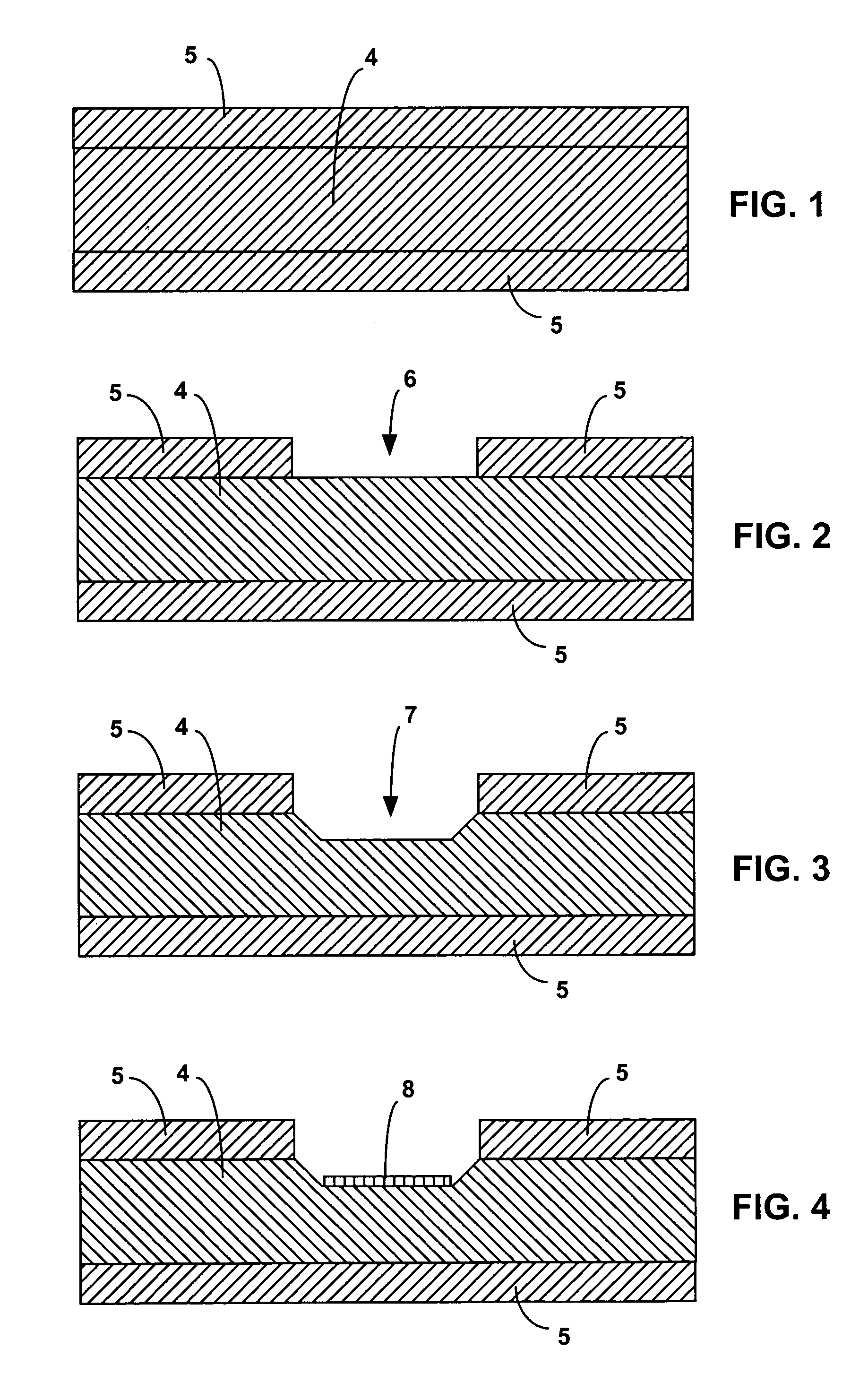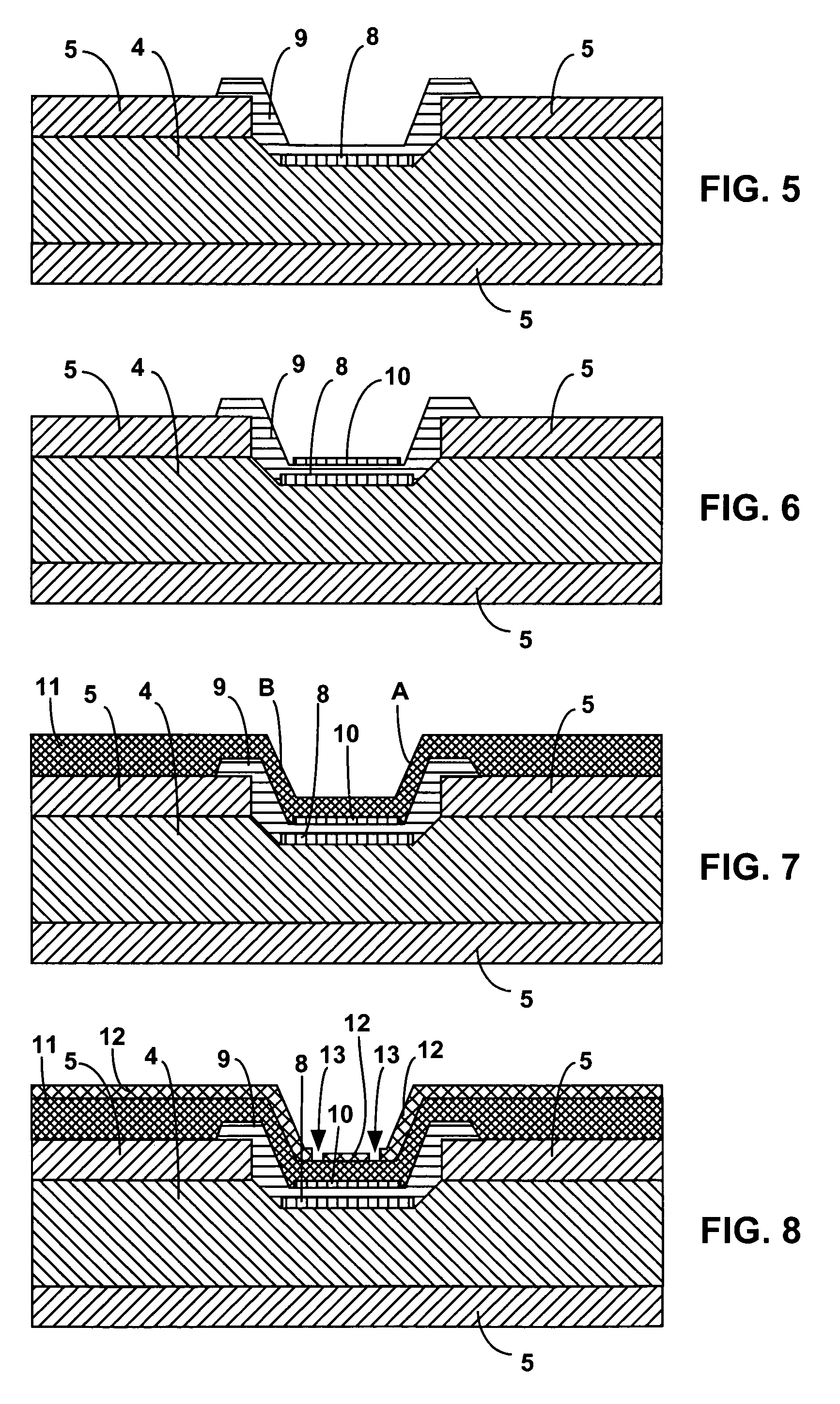Process for fabricating monolithic membrane substrate structures with well-controlled air gaps
a monolithic membrane substrate and air gap technology, applied in the direction of microstructural devices, layered products, transportation and packaging, etc., can solve the problem that the height of the sacrificial layer does not determine the size of the air gap, and achieve the effect of low loss
- Summary
- Abstract
- Description
- Claims
- Application Information
AI Technical Summary
Benefits of technology
Problems solved by technology
Method used
Image
Examples
Embodiment Construction
[0024]In one embodiment of the current invention a silicon substrate or wafer 4 has protective layers 5 of Si3N4 deposited on both sides of the silicon wafer by, for example, plasma enhanced chemical vapor deposition (PECVD), as shown in FIG. 1. Preferably, the layers 5 are about 0.5 μm thick.
[0025]A window 6, as shown in FIG. 2, is then patterned in one of the layers 5 so that the silicon wafer 4 lying underneath the layer 5 can be etched.
[0026]Next, a trench 7, shown in FIG. 3, is etched in the silicon wafer 4. Preferably, the etchant used in this step is a KOH solution and the trench 7 has a depth of between about 5 and about 50 μm.
[0027]A metal pad 8, an example of which is shown in FIG. 4, is deposited and patterned in the trench 7. Preferably the metal pad 8 consists of a Ti—Au film having a thickness of about 1 μm. The metal pad 8 can be, for example, an electrode for electrostatic actuation.
[0028]The following figures show embodiments where the upper protective layer 5 is pr...
PUM
| Property | Measurement | Unit |
|---|---|---|
| thick | aaaaa | aaaaa |
| depth | aaaaa | aaaaa |
| depth | aaaaa | aaaaa |
Abstract
Description
Claims
Application Information
 Login to View More
Login to View More - R&D
- Intellectual Property
- Life Sciences
- Materials
- Tech Scout
- Unparalleled Data Quality
- Higher Quality Content
- 60% Fewer Hallucinations
Browse by: Latest US Patents, China's latest patents, Technical Efficacy Thesaurus, Application Domain, Technology Topic, Popular Technical Reports.
© 2025 PatSnap. All rights reserved.Legal|Privacy policy|Modern Slavery Act Transparency Statement|Sitemap|About US| Contact US: help@patsnap.com



